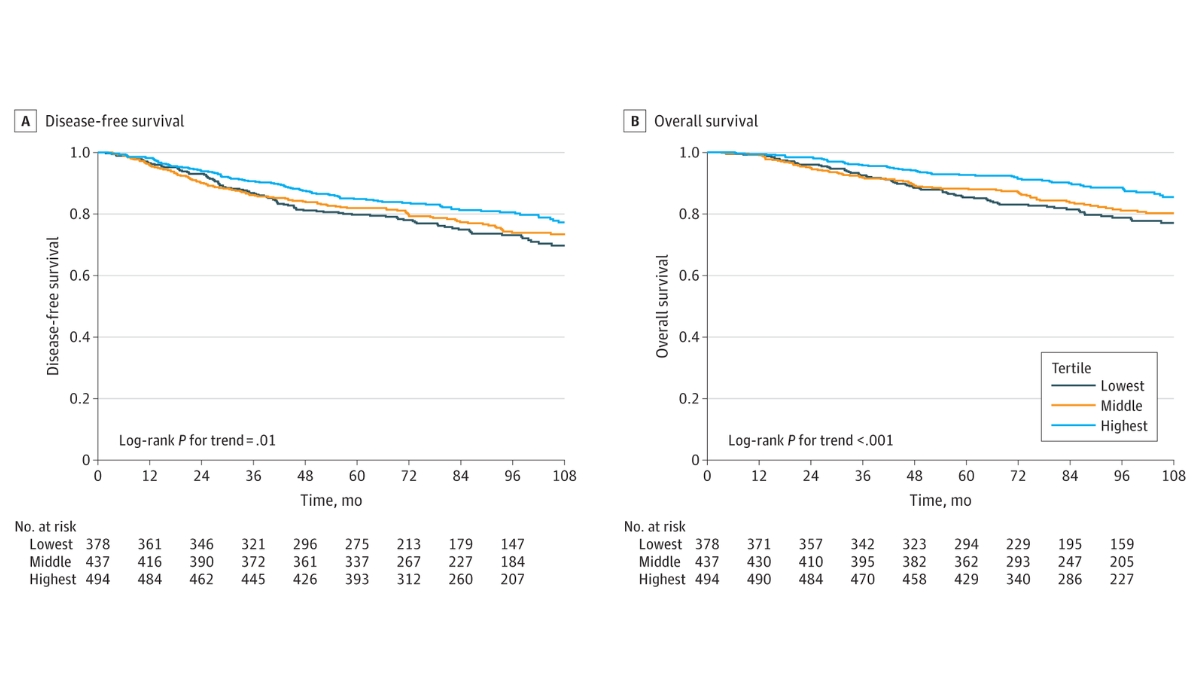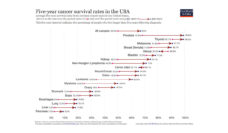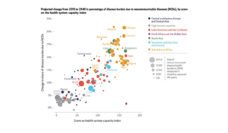Americans consistently list cancer as their most feared disease. In fact, 61% of Americans consider cancer a death sentence. And this perception impacts behavior: individuals who fear cancer are more likely to avoid seeing physicians.
Unfortunately, without their physicians, they won’t know that a cancer diagnosis is not a death sentence. In fact, lifestyle choices play an important role in survival. For example, increased physical activity and high quality diets are associated with reduced mortality rates in cancer patients.
Building on this research, the American Institute for Cancer Research and the American Cancer Society regularly publish behavioral recommendations for cancer prevention. And the same guidelines apply after a cancer diagnosis to improve treatment outcomes.
Rikki Cannioto and colleagues studied how adhering to these guidelines impacted cancer survival in patients with high-risk breast cancer who were undergoing treatment. Because existing research primarily focuses on individual behaviors, the authors investigated how pursuing multiple concurrent health behaviors improved survival.
They identified seven recommendations from both organizations: adequate physical activity, normal body mass index, increased consumption of a variety of fruit and vegetables, limited red and processed meat consumption, limited sugar-sweetened beverage consumption, no alcohol consumption, and no smoking.
The authors used an aggregate lifestyle index score (LIS) to capture adherence to each individual recommendation: 1 point for strong adherence, 0.5 points for partial adherence, and 0 points for non-adherence. Patients were then categorized into levels by total LIS, with higher scores meaning stronger adherence to recommendations.
They tracked time to disease returning (disease-free survival) and time to death from any reason (overall survival). Strongest adherence was associated with longer survival: instances of disease recurring decreased by 37%, and mortality decreased by 58%. Reductions were observed even in patients with more aggressive cancer types.
Controlling one’s health behaviors may not lessen fear of having been diagnosed with cancer. But through these recommendations, cancer patients can care for themselves and improve their prognoses.
Databyte via Rikki A. Cannioto, Kristopher M. Attwood, Evan W. Davis, et al. Adherence to Cancer Prevention Lifestyle Recommendations Before, During, and 2 Years After Treatment for High-risk Breast Cancer. JAMA Network Open, 2023.














